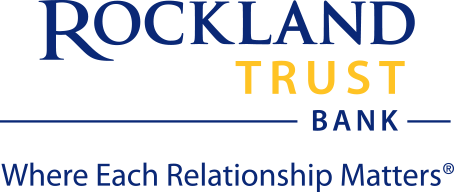Written by Steve Andrews

The markets are “Fed Up,” as the shadow of the Federal Reserve hangs over them like a Halloween ghoul. After initially dismissing inflation as transitory, FOMC members seem to be everywhere, trying to regain confidence in the central bank as they outdo each other in insisting that US interest rates must go much higher and remain there until prices fall back within the Fed’s target range.
That has turned the economic world on its ear since any good economic news, like strong employment, which would lift investors’ spirits and stock prices in normal times, is seen as inflationary and would force the Fed to keep raising rates until the economy suffocates.
Stock Market
September has traditionally been a tough month for stocks and this year was no exception. US stocks last month picked up where August left off – and not in a good way. The major stock indexes touched new lows for the year and the yield on the 10-year Treasury broke above 4.00%. However, the start of October sparked a brief reversal of that trend when the S&P 500 enjoyed its best 2-day rally in nearly 30 months (up 5.6%) before giving some of it back – as good economic news on services and jobs was seen as bad news for equities.
Services Sector
The US services sector accounts for over 80% of our economy and growth remains strong according to the Institute of Supply Management (ISM) which collects data for its monthly index. In September, the non-manufacturing index rose to 56.7, back near its 2022 highs – with 15 of 18 industries reporting expansion. Respondents noted some slowdown in sales, consumer uncertainty from inflationary concerns, and continued hiring challenges.
Still, many of the pandemic challenges are easing. For example, the supplier deliveries index fell for the third month in a row and sits at the lowest level since the recovery began as supply chains heal and, after peaking at 84.6 last April, the index for prices-paid fell for the fifth consecutive month.
The rate of growth for the two most forward-looking subsets, business activity and new orders, edged lower but remained well above the “50” mark (these are 50 / 50 indexes, where a reading above 50 signifies growth, and vice-versa). On the jobs front, the employment index rose to a six-month high as demand for labor in the service sector remains steady. We expect growth in the largest segment of the US economy to remain strong into 2023.
The Economy
US employment also remains healthy in the face of rising prices. The US economy added 263,000 non-farm payroll jobs in September, while the gains for July and August were revised up by a combined 11,000. The separate Household Survey, of smaller businesses and start-ups, from which the unemployment rate is calculated, showed a gain of 204,000 jobs last month. That, combined with a 57,000 drop in the US labor force, helped pull the Unemployment Rate back down to 3.5%, tying it with its lowest level since 1969. The broader U-6 unemployment rate, which includes those working part time who want a full-time job, fell to 6.7% (tied with the lowest level on record) from 7.0% in August. Total wages (hourly wages plus hours worked) are staying just ahead of Consumer Price Index (CPI) inflation (8.6% versus 8.2%) but workers are putting in longer hours to accomplish this feat. US employment has risen by 5.69 million jobs over the past 12 months and is now 514,000 above (strong) pre-pandemic levels.
Growth in the US manufacturing sector eased to the slowest pace since the recovery began, from 52.8 in August to 50.9 in September, as just 9 of the 18 industries reported growth, citing continued supply chain and labor issues. New Orders fell below “50” to 47.1, which is the lowest reading since COVID first hit. Consumers are shifting buying habits away from goods and toward services and affecting production. Despite that, production did rise a bit as factories catch up on existing orders in the pipeline. In addition, the prices-paid index fell for the sixth month in a row to 51.7, once again suggesting that inflationary pressures may have peaked.
Sustaining Your Manufacturing Business in 2022
Housing, which makes up about 16% of GDP, remains a drag on growth, with Existing Home Sales falling for a seventh straight month in August. However, both Housing Starts and New Home Sales bounced back in August (up 12.2% and 28.8%, respectively) and they contribute twice as much to GDP growth than do existing home sales.
Inflation
Inflation remains stubbornly high. The CPI grew 0.4% in September, but oil prices have rebounded in October and will likely push CPI higher when we see the next update before Thanksgiving. Other data on prices, from used cars to commodities, also show that inflation appears to be easing somewhat, especially outside the energy sector. The most recent Fed report on the growth in the US money supply (M2), which exploded by 40% in the year following the shutdown of the economy and, we suspect, was the main accelerant for the flame up in inflation we’ve suffered this year, showed that M2 remained essentially flat for the past six months. If we’re correct, the lack of growth (coupled with strong global demand for US Dollars) in M2 this year should start to have a positive effect on prices by year-end as it allows economic growth to catch up. If so, it will take a lot of pressure off the Fed, as its hardline approach to inflation has shaken investors’ confidence in the recovery.
We say recovery because the media has been playing up the idea that we are already in a recession. The manufacturing, services, and jobs data indicate otherwise. September auto sales, at a 13.5 million annual sales rate, were the strongest since April. And, while job openings fell in August from 11.2 million to 10.1 million, the share of “quitters” (voluntary job leavers) among the unemployed reached 15.9% - the highest share since 1990 – as workers remain confident that they can find better working conditions if they aren’t happy where they are. As such, we expect Q3 GDP growth to come in close to 3.0% after two quarters of negative growth.
How to Develop Talent Within Your Business
At the September FOMC meeting the Fed projected 2.8% PCE inflation (Personal Consumption Expenditures, their preferred measure of inflation) in 2023. That appears overly optimistic, but a lot can happen over the next six months. For now, it’s doubtful that the Fed will stop, or even slow, rate hikes, so expect another three-quarters of a point (0.75%) rate hike at the November FOMC meeting, followed by at least another half-point (0.50%) hike in December. The minutes from their September FOMC meeting underscored their intent. “We are purposely moving to a restrictive policy stance in the near term.”
This doesn’t mean that they will not back off from their aggressive monetary policy if the economic situation warrants but, so long as investors remain concerned that restrictive monetary policy could lead to some “financial accident” that dries up liquidity and harms the global economy, they will remain in a “don’t fight the Fed” mindset.
While it’s hard right now to stay calm and carry on, the longer-term view from inflation-adjusted Treasury bonds (TIPS) dovetails with our sense that we will continue to see gradual improvement in prices which will allow the Fed to eventually back off from their rate-hiking quest sometime next year. Even as the yield on the 10-year US Treasury flirts with 4.00%, the 5-year TIPS rate (which shows where bond investors expect inflation to average over the next 5 years) has fallen from its peak of 3.59% last spring to just under 2.35% of late, while the 10-year TIPS rate has fallen to 2.30%. These long-term views are at odds with the daily volatility that reflects the roller coaster emotions that investors are struggling with day-to-day. The more inflation moderates, the more investors’ angst will ease, lifting prices for both stocks and bonds and allowing the Fed to relax as well. This will take a bit longer, but the wheels are in motion.
Opinions expressed are those of the author and not representative of Rockland Trust Company. This is not intended as professional or any other financial advice. Please consult a professional advisor for your specific situation.


.png)




